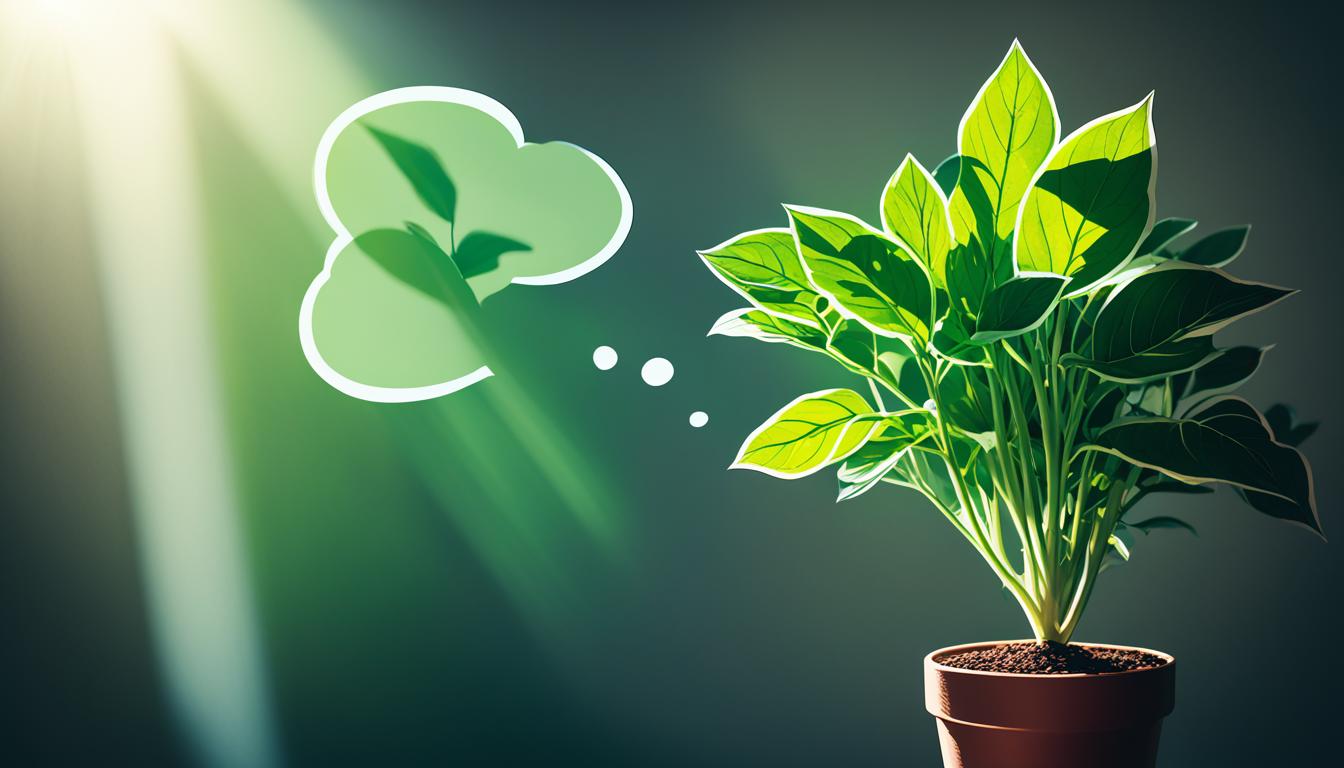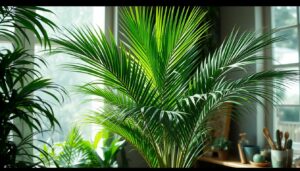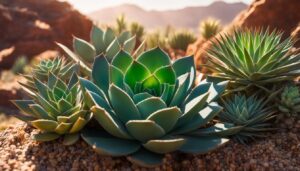Ever wondered why your indoor plants aren’t doing well, even with your best care? It might be because they’re not getting enough light. Sunlight is key for your houseplants. Knowing what light they need is vital for their health and life.
This guide will cover why light is crucial for indoor plants. We’ll look at different light levels and how they affect plants. Plus, we’ll suggest the best plants for your indoor lighting. Discover how to make your home a lush, green oasis.
The Importance of Light for Indoor Plants
Light is key for indoor plants to survive and thrive. It’s vital for photosynthesis, the process that plants need to live. Without enough light, indoor plants won’t grow, bloom, or stay colorful.
Photosynthesis: The Process that Sustains Plant Life
Photosynthesis is at the heart of plant life. It’s how indoor plants need light to make food from carbon dioxide and water. This process also releases oxygen, which is good for us.
If plants don’t get enough light for photosynthesis, they lose energy and can turn pale or lose leaves. Without enough light, plants can’t grow, bloom, or survive well.
| Light Requirement | Plant Response |
|---|---|
| Adequate Light | Vibrant green leaves, healthy growth, and abundant blooms |
| Insufficient Light | Pale, yellow, or white leaves, stunted growth, and a lack of blooms |
Knowing how photosynthesis for houseplants works and how light affects indoor plants helps us give them the best care. This way, our indoor plants can grow well.
Different Light Levels and Their Effects
Understanding the different light levels and their effects is key to caring for indoor plants. Whether you’re growing low light houseplants or bright light indoor plants, choosing the right plants for your home’s light is crucial. This ensures they stay healthy and thrive.
High-light houseplants need direct or indirect sunlight for 6 hours or more. Plants like succulents and cacti can make the most of sunlight. They do well near east or west facing windows.
Medium-light houseplants like some common indoor plants prefer soft, indirect light. They can handle some direct sunlight but do best in partial shade. This makes them flexible for homes with changing light conditions.
If you want low light houseplants, you have many options. These plants can live and even flourish in dim spots, like near north-facing windows. By picking plants that fit your home’s light, you can create a beautiful indoor garden that lasts.
Choosing the Right Plants for Your Indoor Light Conditions
Choosing the right indoor plants is key. It’s important to know your home or office’s light levels. This way, you can pick plants that will do well and make your space look beautiful. Let’s look at some plant suggestions for various light levels.
Plant Recommendations for Different Light Levels
Not every plant needs the same amount of light. Some do well in low light, while others love bright sunlight. Here’s a guide to help you pick the best indoor plants for your lighting situation:
- Low-light plants: Chinese evergreen, snake plant, peace lily, and ZZ plant are great for low-light spots like north-facing windows or dim corners.
- Medium-light plants: Begonia, Ficus, and Monstera prefer east- or west-facing windows with moderate indirect sunlight.
- High-light plants: Cacti, citrus plants, and orchids need lots of bright, direct sunlight. They’re perfect for south- or southwest-facing windows.
Proper lighting is crucial for your indoor plants’ health and life span. By choosing plants that fit your space’s light, you’ll get beautiful, lively plants that add nature indoors.
“The key to successful indoor gardening is understanding your plants’ light requirements and providing the appropriate conditions.”
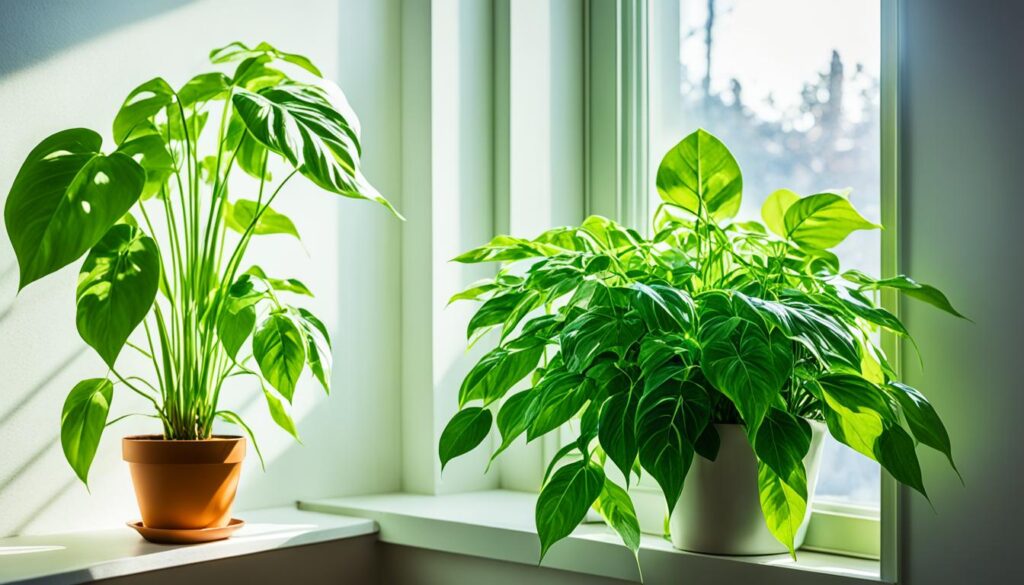
indoor plant light requirements
For your indoor plants to stay healthy, it’s key to know their light requirements. Whether using natural vs. artificial lighting for houseplants, making sure they get the right amount of light is vital. This helps them grow and stay healthy.
Most indoor plants need 6-8 hours of bright, indirect sunlight daily. Put them near a window that gets lots of sunlight but not direct, harsh rays. If they don’t get enough light, they can become leggy, weak, and discolored.
If your home doesn’t get enough natural light, LED grow lights are a good option. These lights copy the sun’s colors and give plants the light intensity they need to thrive. Try different spots and times to see what works best for your plants.
Knowing what your plants need in terms of light and giving it to them can make your indoor garden look great all year. Make sure your houseplants have the optimal lighting they need. This will help them grow strong and look beautiful.
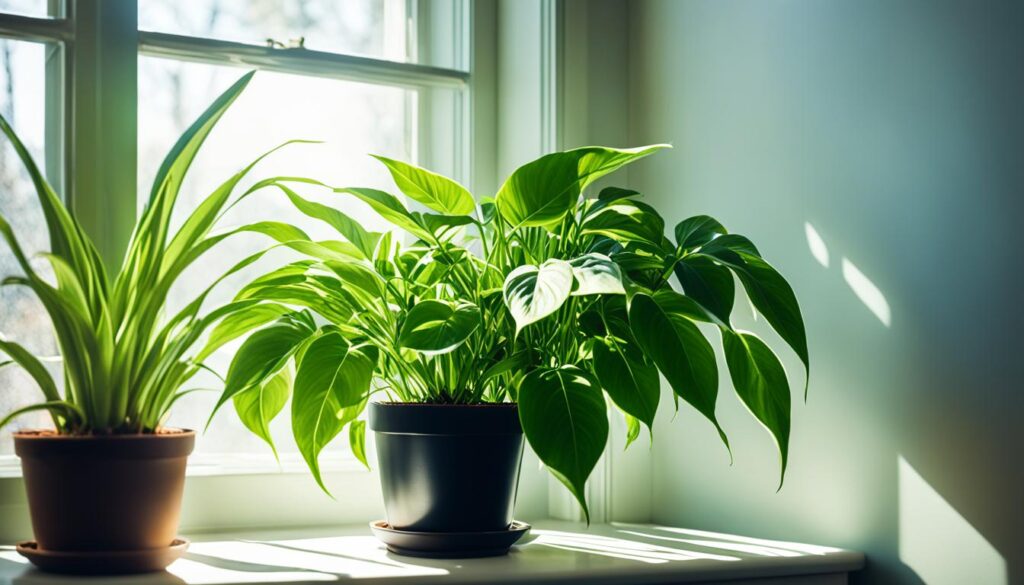
“Sunlight is the main source of energy for plants, and without it, they cannot survive. Understanding the light needs of your indoor plants is essential for their growth and well-being.”
Conclusion
Light is key for a healthy indoor garden. By knowing what your indoor plants need and picking the right ones for your home, you can make a beautiful indoor garden. Even if your home has bright spots or dark corners, there are many indoor plant light requirements and houseplant lighting needs to think about.
Adding grow lights for indoor gardening can really help. These lights give your houseplants the light they need to grow well. By giving your indoor garden the right indoor plant light requirements, you can turn your living space into a lush, green haven.
Use the power of light to bring out the best in your indoor plants. With the right knowledge and care, your home can become a peaceful place where nature and modern life meet perfectly.
FAQ
What is the importance of light for indoor plants?
Light is key for indoor plants because it helps them make their own food through photosynthesis. This process gives them the energy they need to grow and stay healthy. Without enough light, plants can’t make the food they need, leading to weak growth, pale leaves, and even death.
What are the different light levels that indoor plants require?
Indoor plants need different amounts of light. High-light plants need direct or indirect sunlight for more than 6 hours a day. Medium-light plants like some sunlight but prefer indirect light. Low-light plants can survive in places with very little light, like north-facing windows or dark corners.
How can I determine the light levels in my home and choose the right plants?
First, check how much natural light your home gets and for how long. Then, pick plants that fit your indoor light conditions. For low-light spots, choose plants like Chinese evergreen or snake plant. For brighter areas, go for Begonia or Monstera. If you have very bright windows, cacti or orchids are good choices.
Can I use supplemental lighting to meet the light needs of my indoor plants?
Yes, you can use extra lights like LED grow lights if your home doesn’t get enough natural sunlight. Making sure your plants get the right amount of light, from natural or artificial sources, is key to keeping them healthy and happy.


